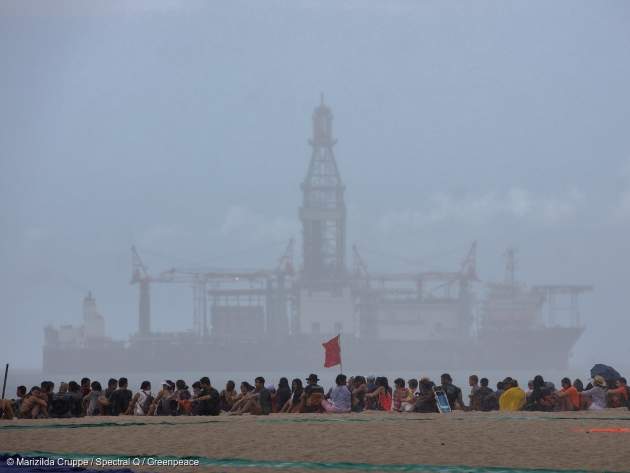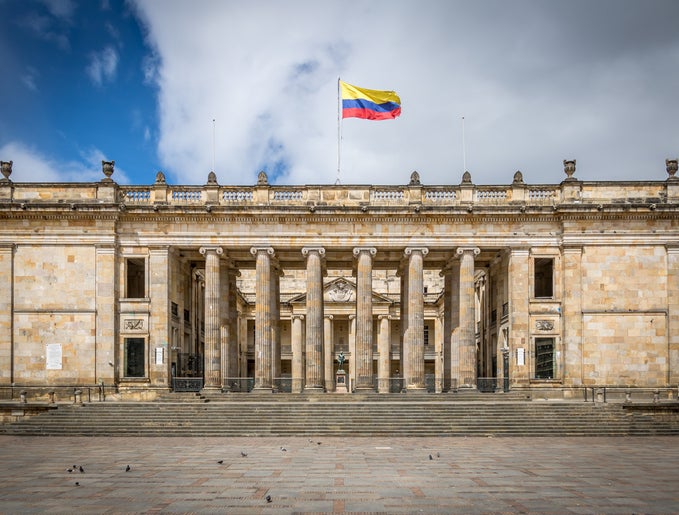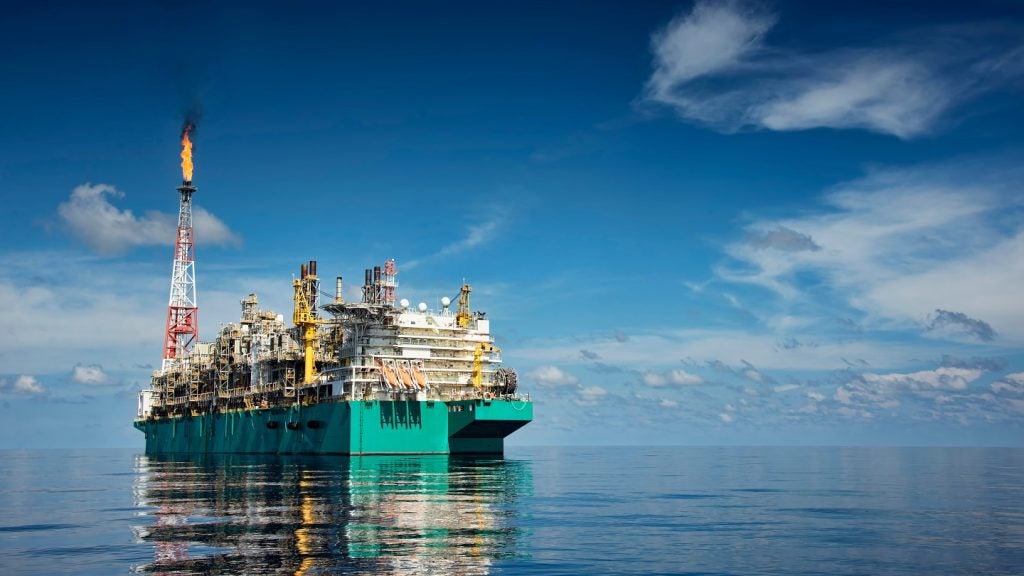

The discovery in 2007 of massive oil reserves in the offshore area now known as the Subsalt Polygon has provoked considerable excitement about the growth potential of Brazil’s offshore oil and gas market. A particular focus for enthusiasm is the country’s deepwater and ultra-deepwater resources, which have been consistently boosting production (despite lowered expectations in the wake of depressed global oil prices) as a result of accessing pre-salt hydrocarbons at extreme depths.
Brazil and the US now account for more than 90% of global ultra-deepwater production, with Brazil leading the world in the development of these resources, increasing ultra-deepwater production from 1.3m b/d in 2005 to 2.2m b/d in 2015. According to a 2015 study by Rio de Janeiro State University’s National Institute of Oil and Gas, the Subsalt Polygon contains at least 176bn BOE of undiscovered, recoverable oil and natural gas, and this, the researchers said, is a conservative estimate.
The Subsalt Polygon has been such a success for the oil and gas industry that offshore Angola, one of the only other major deepwater markets, is being heavily targeted for exploration because of its geologic similarity with the Brazilian coast.
Foz do Amazonas: impressive hydrocarbon potential
Further north up the Brazilian coast from the Subsalt Polygon district, another offshore area has prompted high hopes from the oil and gas industry over the last few years. The Foz do Amazonas Basin, off the coast from the mouth of the mighty Amazon River in Brazil’s Amapá state, could contain up to 14bn barrels of oil, according to government estimates. Not quite the industry-changing bonanza that the Subsalt Polygon represents, but still more than the entire proven reserves of Mexico, and an attractive opportunity for companies – both Brazilian and foreign – to develop a new offshore frontier.
See Also:
The basin was the hot-ticket item during Brazil’s 11th oil and gas bidding round back in 2013. Oil major Total, along with minority partners BP and Brazilian national oil company Petrobras, paid around $190m for the rights to five exploration blocks in the Foz do Amazonas region, with Total owning a 40% operating stake and BP and Petrobras each owning a 30% share of the blocks. Other companies to win blocks included BP (which snapped up one block for itself), BHP Billiton and Brazilian firms OGX and Queiroz Galvão Exploration and Production.
How well do you really know your competitors?
Access the most comprehensive Company Profiles on the market, powered by GlobalData. Save hours of research. Gain competitive edge.

Thank you!
Your download email will arrive shortly
Not ready to buy yet? Download a free sample
We are confident about the unique quality of our Company Profiles. However, we want you to make the most beneficial decision for your business, so we offer a free sample that you can download by submitting the below form
By GlobalDataOn top of the region’s promising estimated reserves, Foz do Amazonas has been made even more enticing by the significant successes of ExxonMobil off the coast of neighbouring French Guiana, exploring highly comparable geology. The company announced a major oil discovery in the Liza field in May 2015, and just over a year later stated that the discovery alone would likely yield up to 1.4bn barrels, valued at around $70bn last year and double the size of Exxon’s initial estimates.
A potential offshore frontier at a crossroads
However, even as Total and its partners ramped up to begin exploratory drilling in its Foz do Amazonas blocks, having identified nine potential sites for initial works and waiting only for environmental approval from Brazil’s Institute of Environment and Renewable Natural Resources (IBAMA), another fascinating discovery has thrown everything into doubt.
Last year, an international team of scientists announced a discovery that confirmed what some have suspected since the 1970s – a 1,000km-long coral reef system around the mouth of the Amazon, rich with marine life and flourishing despite long periods without sunlight due to extensive sediment coverage from the river. The scientists believe the coral has grown by using chemosynthesis – producing energy and organic matter using CO2, water and inorganic substances, with no light required – rather than photosynthesis.
“We found a reef where the textbooks said there shouldn’t be one,” Federal University of Rio de Janeiro researcher Fabiano Thompson told the National Geographic last year.
The reef system lies worryingly close to several offshore blocks awarded for oil exploration in the Foz do Amazonas Basin, including Total’s blocks, the closest of which is around 8km from the reef. This discovery has thrown a spanner in the works for Total and its partners, which are still waiting for environmental approval from IBAMA to begin exploration and now face growing opposition from environmental activists and other groups, setting up a contest between two competing discoveries – the basin’s hydrocarbon potential and its richer-than-expected natural eco-system – whose needs appear to run counter to one another.
Protecting the Amazon Reef
The proximity between sections of the reef and the offshore drilling blocks has prompted an outcry from environmentalists looking to ensure that this unique marine habitat remains undisturbed. The scientists responsible for the discovery have been forthright with their concerns about exploratory drilling in the area, arguing in the key study of the reef, published in the Science Advances journal, that more must be understood about this region before a proper judgement on the oil industry’s impact can be made.
“These blocks will soon be producing oil in close proximity to the reefs, but the environmental baseline compiled by the companies and the Brazilian government is still incipient and largely based on sparse museum specimens,” the study noted in its conclusion. “Such large-scale industrial activities present a major environmental challenge, and companies should catalyze a more complete social-ecological assessment of the system before impacts become extensive and conflicts among the stakeholders escalate. The feasibility of oil and gas operations may be assessed by considering environmental and social sensibilities, but even the extent of the overlap of exploratory blocks with sensitive areas remains unclear.”
While Total was still waiting for approval from IBAMA to proceed – with drilling pipes, drills and containers for the project sitting at Belém Port since January – the federal prosecutor’s office for the state of Amapá in May sent a letter to IBAMA recommending the suspension of environmental licencing, arguing that the companies “did not take into account the important ecosystem of the coral reef of the mouth of the Amazon River” in their environmental impact assessments. This essentially leaves the partners in limbo, unsure of whether they will receive approval or be asked to re-start the licencing process, which would involve starting from scratch with new environmental applications.
Greenpeace has taken a leading role in the public response to the perceived oil industry threat to the reef, organising demonstrations in Brazil. “BP and Total are proposing a technically challenging, risky deep water operation close to a unique and largely unexplored biome in an area with an unknown number of endangered species,” said Greenpeace Brazil campaigner Thiago Almeida. Unique and vulnerable wildlife endemic to the region include the Amazon river dolphin and Amazonian manatee, as well as the critically endangered hawksbill sea turtle.
Is a green light justified?
The companies involved, meanwhile, argue that their environmental assessments have taken the reef into account, with a Total spokesperson telling the Thomson Reuters in May that the “drilling activity will not impact the reef system” and that the company still expects to begin drilling exploratory wells by the end of the year.
Many arguments against the project cite the extreme depth of the proposed well sites, which extend to water depths of up 2,400m, far deeper than the 1,500m depth that the Deepwater Horizon platform was operating in before the disaster in 2010. While critics say these operating depths exacerbate environmental risks by making it more technically complex to respond in the event of a catastrophic oil spill, Total’s chief executive in Brazil Maxime Rabilloud has noted that the company plans to use a well design that has been used safely in comparable conditions offshore French Guiana.
Addressing the prospect of an oil spill contaminating the reef, BP has said that even if a major spill should occur, the reef will likely remain safe. “Our analysis shows that, even in a worst case scenario, there is a very high probability that any oil would flow away from the reef area,” the company told The Guardian newspaper in a February statement. It should be noted, however, that IBAMA reportedly rejected Total and BP’s oil spill modelling earlier this year as “statistically incoherent” and failing to properly acknowledge the environmental variability of the region.
From an oil and gas industry standpoint, one thing is clear – this case, not to mention Brazil’s general instability in the wake of major political scandals and a deep economic recession, is heavily detracting from the country’s attractiveness as an investment destination. Total is reportedly considering steering clear of three offshore licencing rounds set to take place by the end of 2017, and having sunk nearly $200m into acquiring the licences in 2013 and since invested around $64m in developing its blocks, it’s an understandable reticence.
“It's complicated to ask for more money to enter into more exploration blocks without clarity about when the earlier blocks can be evaluated to see if they have any oil,” Rabilloud told Reuters in March.
The regulatory and political situation in Brazil is fluid and multi-faceted, and that is bringing a great deal of uncertainty at the moment, both for the companies trying to explore in Foz do Amazonas and for the newly discovered reef system that so many are desperate to protect. At the time of writing IBAMA has not indicated when exactly it intends to make a decision on approving Total’s drilling in the region. Whatever the agency decides, it’s a choice that it will have to justify in the context of Brazil’s world-renowned natural treasures, as well as its embattled economy.





